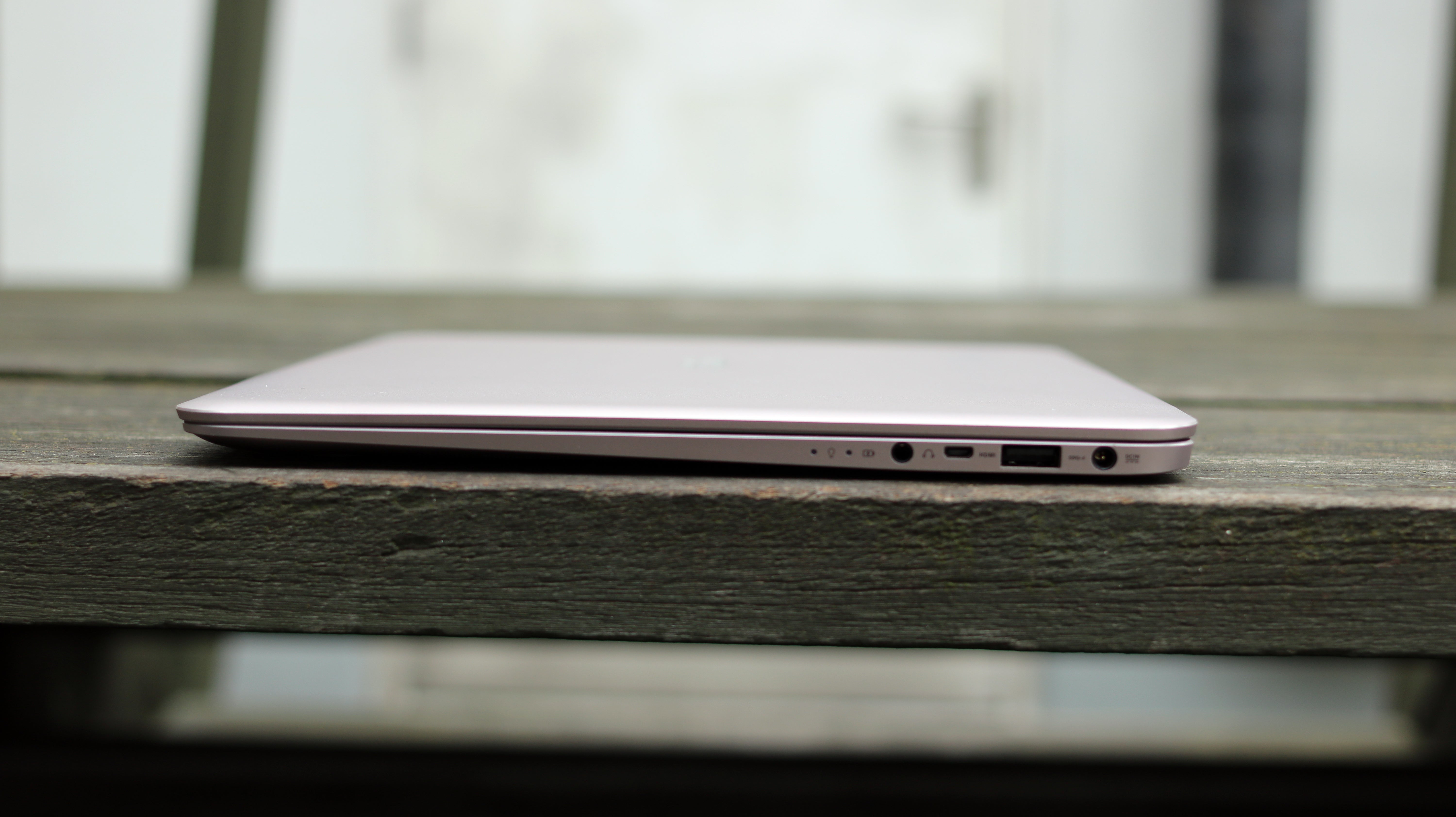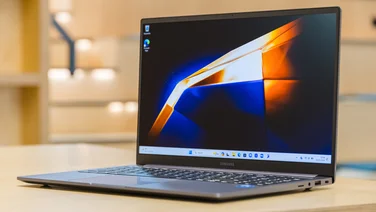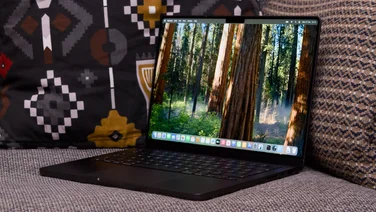To help us provide you with free impartial advice, we may earn a commission if you buy through links on our site. Learn more

Update: The Asus ZenBook UX305CA was one of last year’s best laptops but it’s since been superseded by a swathe of new Kaby Lake alternatives and is becoming increasingly difficult to find. Alas, your chances of finding another at the same low price and at the same high level of quality are diminishing rapidly as the value of the Pound falls and the price of laptops and gadgets in general rises.
You can check out our pick of the very best portables in our Best Laptops of 2017 roundup, but if you can find a 2016 model Asus ZenBook you should snap it up because it doesn’t look like good laptops are getting any cheaper. In the meantime, you can read our original review below, or check out our current recommendations.
It’s also worth noting that Asus has just released its range of laptops for 2017 and we’ll have reviews of all the key models throughout August, September and October 2017. Keep your eyes peeled.
READ NEXT: Best laptops
Asus ZenBook UX305CA review: In full
Asus’ ZenBook range is one of consumer technology’s pleasant consistencies, both in terms of their stylish designs but also in terms of performance. The ZenBook UX305 released last year was the first model to use the new intel Core M processors, which helped give Windows-based laptops a pretty suitable contender to Apple’s MacBooks, which also feature the same processor.
Fast forward just over a year on now, and the Core M range has been given a substantial leg up, with some pretty respectable increases in clock speed. The Core m3-6Y30 processor that can now be found inside the UX305CA has had a substantial increase from 0.8GHz to 0.9GHz. While this might not sound like much at a purely numerical value, you can expect to find significantly faster-processing power within. Before we move on, It’s definitely worth noting that there’s also a ZenBook UX305UA model in production, which uses more conventional Intel Core i3, i5 and i7 processors depending on configuration, so make sure to keep an eye on which you’re ordering to avoid confusion.
As before, these slow clock speeds might make you think you might have fallen into a time machine and found yourself decades in the past, but once you realise Intel’s Core M processors are designed to Turbo boost to far nippier speeds it makes a bit more sense. The processor housed inside the UX305CA has a 2.2GHz Turbo Speed, 0.2GHz quicker than the last year’s model, allowing for capable performance when required.
Considering the Asus ZenBook UX305CA is now significantly cheaper than when we first reviewed it, currently retailing for just a smidge under £600, is it still worth it a couple of months down the line?

At face value, the UX305CA is as delightfully light and svelte as its predecessor. Weighing just 1.2kg with a thickness of 12.3mm, it’s just slightly thinner but a little bit heavier than the MacBook for those comparing, giving you all-day portability without ever becoming a serious burden.
Available in a choice of three different colours, Asus produce ‘Ceramic White’, ‘Aurora Metallic’ (silver) or ‘Obsidian Stone’ (black) versions. Only the latter uses Asus’ now signature ‘spun-metal’ finish on its exterior, the concentric circled ridging seen on other models such as the ZenBook UX303UA.
The all aluminium chassis of the UX305CA feels well both sturdy and well constructed in your hands, yet the overall weight has been kept to a minimum while the edges are well-finished and chamfered. Cutting things short, this is a very classy laptop.
Keyboard and Touchpad
Open the lid and you’re welcomed by the UX303CA’s chiclet keyboard with stark contrasting black keys. As before, the keyboard isn’t backlit, which is something of a shame and while it isn’t exactly expected for a laptop at this price, it’s always a welcome inclusion nonetheless.
The keyboard itself is satisfying and comfortable to use, with a decent amount of travel to the key action. The keys themselves are nicely well spaced and there aren’t any puzzling key placements to throw your fingers into flux. Similar to the comparatively priced HP Envy 13, but not as pronounced, the ZenBook UX305CA hinge rounds over and under when the lid is opened, propping the keyboard up by a few millimetres. This angles the keyboard slightly, making for a bit more of a comfortable typing experience.

A generous size, the touchpad has a pleasant coating to its surface and while it doesn’t match up to Microsoft’s requirements for a Precision-certified touchpad it responds decently nevertheless. You get the option to configure multi-touch gestures using Asus’ Smart Gesture software and the usual three-finger, two-finger and pinch gestures are configurable. The integrated mouse buttons found in the touchpad itself are decently responsive and I never encountered any annoyances in day-to-day use.
Connections
There are three USB3 ports, one of which is powered even with the laptop turned off so you can charge your other devices. There’s also an SD card reader and a headset jack. No sign of USB Type-C here, but then that seems to be the order of the day for laptops around this price at present. Micro HDMI is available for outputting to an external display. In terms of networking, there’s 802.11ac Wi-Fi and Bluetooth 4.0.
Stereo speakers are provided by Bang & Olufsen but these don’t reach particularly high volumes and they produce an overly bright sound.
Benchmarks and Performance
With the updated processor inside, I came in expecting a modest performance increase from this new model – both have 8GB of RAM. The reality, however, was that it performed moderately worse than its predecessor. It managed an overall score of 19, which is a single point less than last year’s model.
The same Intel Core m3-6y30 managed a score of 23 in the HP Spectre X2 recently, meaning there’s some throttling going on, probably to keep heat under control, which is a shame. This was with our tougher 4K-based benchmarks, so it’s still going to have enough performance for general everyday computing. Expecting more demanding tasks from a laptop of this size and weight was always going to be unrealistic. Don’t expect much in the way of gaming from the integrated Intel HD Graphics 515, either.

Battery performance during our video playback test was a little underwhelming at 6 hours 4 minutes. This was with the screen set to 170cd/m2, our standard indoor-use brightness that we test all displays at. Under more general everyday use you can likely just about eke out ‘all day battery’ of 8 hours with more general tasks.
It’s still a little disappointing that you don’t get more longevity out of Intel Core M processors, though. While they help to reduce weight and size and keep the noise down with fanless designs, they don’t add much in the way of stamina. Still, this laptop’s high-resolution screen could be partially to blame for sapping the battery.
Display
The previous UX305 we looked at had a comparatively bog-standard, but perfectly acceptable, 1,920×1,080 resolution display. For the new model, there’s now a 13.3in 3,200×1,800 resolution panel option, which is the model I reviewed. The extra resolution makes everything appear incredibly crisp. You’ll likely need to tweak Windows 10’s scaling to get text and icons up to a viewable level.
It’s also incredibly bright. Asus states it has a brightness of 300cd/m2, but the model I tested had white levels of an incredibly bright 409cd/m2. This had an adverse effect on black levels, which were very high at 0.77cd/m2. Similarly, a contrast ratio of 513:1 also sounds a little low, but considering this is a matte panel it’s not too bad.
Certainly under more superficial scrutiny, the panel appears vibrant with bold colours. The panel’s sRGB coverage of 90.2% certainly is very respectable for a laptop of this price, and its Delta-E average of 2.79 is fine provided you’re not looking for a colour accurate screen. Viewing angles are slightly acute, but in part, the ridiculous brightness makes it seem worse than it is.
You’re able to quickly toggle on and off the ambient light sensor from the keyboard, which is a handy shortcut and there’s also Asus’ Splendid display profile software if you want to make colour adjustments. Vivid mode, for example, boosts saturation and makes colours pop but it was a bit too extreme for my tastes.
Conclusion
There’s undoubtedly a lot to like about the ZenBook UX305CA. Its build quality and design are still excellent and the high-resolution screen is equally great. However, its performance took a puzzling step backwards and its battery life was a little disappointing. Still, considering it’s now considerably cheaper than when we first reviewed it, it’s still worthy of recommendation for those looking for a thin, light and extremely portable laptop, especially for those not looking to stretch to the Apple MacBook.







